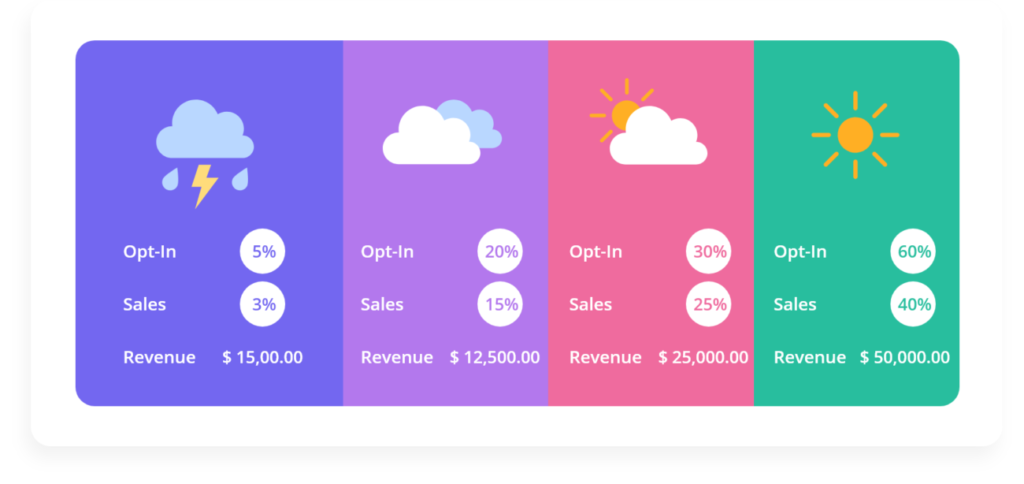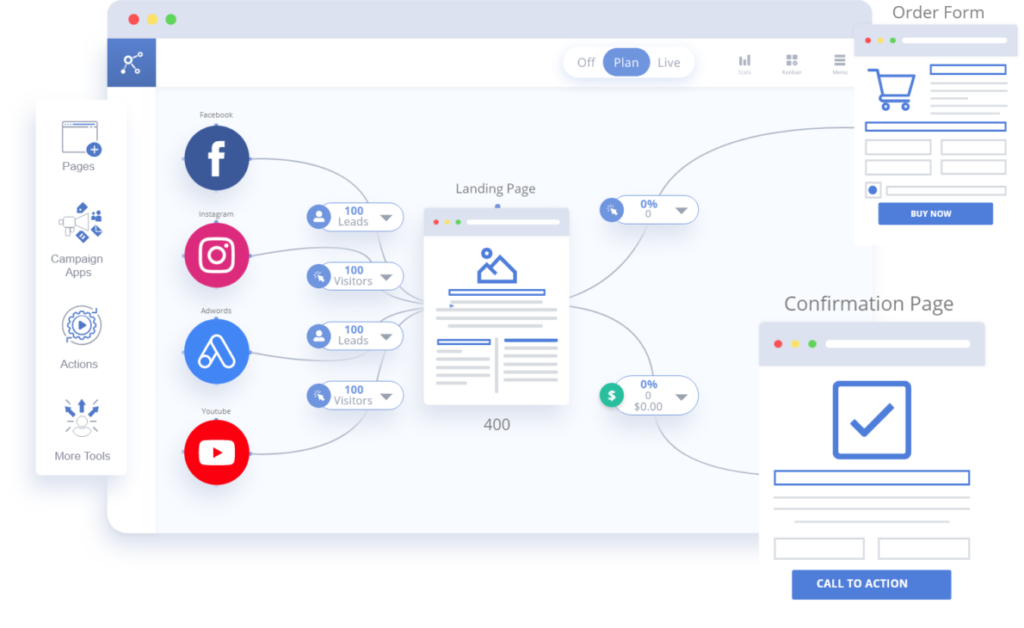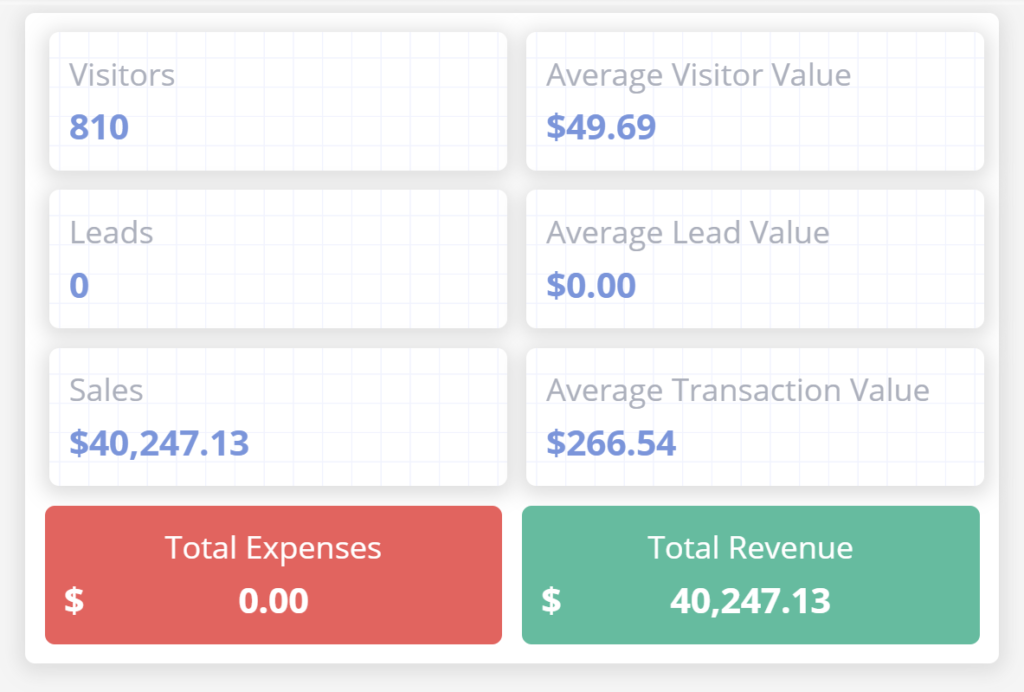One of the most critical aspects of your business plan is the sales forecast. As a tool that helps you predict future revenue, your sales forecast ties into the other elements of your business plan, including the market analysis, marketing plan, and pricing sections. The objective of a sales forecast is to build and justify your sales estimate for the upcoming year.
Traditionally, sales managers are responsible for preparing sales forecasts and ensuring their teams have a goal to reach during each business period. But how do you start? Why is sales forecasting as important as it is? Keep reading to find out.
The Importance of Sales Forecasting

Sales forecasting is a supplement to your finances as it will allow you to create essential financial statements, such as a balance sheet, cash flow statement, and more.
Besides being a crucial tool for your business finances, a sales forecast also allows you to set clear goals for your business. It will open you to things that you want to achieve and push you to reflect upon your goals.
During the process of developing a sales forecast, you’ll have to consider what results you want to see over the next month or even the next year. Goals are essential for your company as they will help give it direction. A sales forecast will help you set KPIs and make sure you hit the numbers you need.
Aside from giving your team direction, sales forecasts act as a guide to the amount of money you should spend for the sake of your business. Use your sales forecast to help you plan your marketing, operations, and administration budgets.
No business owner wants to run out of funds in the middle of operations, and a clear forecast makes it easier to create income-generating strategies that will sustain your business.
How To Create a Sales Forecast
Building a sales forecast doesn’t have to be complicated. Sure, it’s going to take time because of all the details involved, but the results are worth it. You don’t need a huge number of data points, but that doesn’t mean you should come up with ballpark figures. At the end of the day, it’s a process that will lay the foundation for a realistic business strategy.
Here are some tips to help you create a complete and detailed sales forecast.
1. Map Your Process

Begin by mapping the sales process. Doing so will help you manage and document your sales better, which will enforce consistency and accountability. Your sales process also includes your pipeline stages. In this case, you need to define each stage according to the behavior of your prospects.
2. Refer to Past Data
One of the easiest ways to forecast sale is to refer to your past data. Projecting sales based on past performance will help you set a decent baseline. It will present you with reliable data that will help you predict your future sales. There’s no need to go back to data from day one—instead, you can look back at the past two years to get enough data. Keep in mind that you will need to adjust the numbers for inflation and estimate prices for your latest sales forecast.
3. Make a Unit Sales Projection
To come up with your Unit Sales Projection (USP), you need to start by forecasting unit sales every month. This is often thought to be limited to the sales of physical goods, but a lot of service-based businesses also create unit sales projections because it’s a lot easier to break things down for reliable forecasting.
If you’re creating a unit sales projection using past data, you can use the corresponding period from the past to go forward.
4. Predict Prices
It’s natural to feel that you need to adjust your future prices for inflation based on your past data. To do this, project the prices as you did with you unit sales—monthly going forward one year.
5. Calculate Your Average Unit Costs
The Cost Per Unit (CPU) refers to the amount paid for one unit. For physical products, the CPU is determined y the set price by the supplier. It doesn’t include salaries or marketing expenses. If you’re calculating for a service, the CPU is the cost of delivering said service.
6. Use Visuals

Make your sales forecast easier to understand and read with visuals. One of the most highly recommended visuals for sales forecasting is charts. A chart will make your sales easy to see and is a great way to highlight irrationalities in terms of your sales growth. Regardless of the visual aid you use, these tools will make your forecast more presentable to investors and lenders as well as your team.
7. Calculate Everything
When you finally have your unit sales projections, projected prices, and average unit costs, it’s time to put everything together. Start by multiplying the USP by the projected prices to get your sales. Do the same with the USP and the average unit costs to find the costs of your sales. After that, subtract the costs of sales from your sales. There you have it!
8. Prepare For Ongoing Adjustment
Keep in mind your forecasts will never be wholly accurate. While they play crucial roles, they are ultimately predictions that will require some adjustments along the way. You’ll also have to remember that there are a lot of factors that can affect your sales, which is why when you finished with your sales forecast, it’s time to focus on tracking your actual numbers and revise your projections accordingly.
9. Use a Tool
Keep all your data for your sales forecast in one place by using a tool. Find a free marketing tool like MarketPlan that will allow you to automate all your data and make creating a sales forecast for your business so much easier.
Conclusion
These are some of the tips you need to keep in mind when you’re creating a sales forecast for your business. Indeed, it could be a tedious process but there is a wealth of information that you can pick up along the way to help you form more effective strategies for better results.
A sales forecast will lay the foundation for your business plan and help you make better financial decisions. Make your sales forecast more convenient with the help of marketing tools as they will help you plan, executive, project, and optimize your marketing strategy from one place.
We’re a free marketing tool that offers more than ten marketing mini-apps to help you stay on top of business forecasting and analytics. Sign up today to start planning for success!